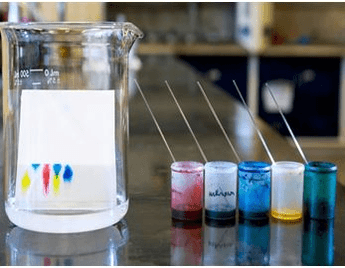EVALUATION OF ANTIBACTERIAL ACTIVITY OF SOME MEDICINAL PLANTS BY BIOAUTOGRAPHY
Keywords:
Acacia cyanophylla, antibacterial, bioautography, flavonoids, Phlomis syriaca, Scolymus hispanicusAbstract
Background Acacia cyanophylla is a medicinal plant of the Fabaceae family that is widely distributed in Australia and Asia, also it has many medicinal properties such as antibacterial and antioxidant activity. Thin layer chromatography (TLC) is wildly used in natural product extract analysis as a finger print.
Aim and objective: This study is aimed to conducting a qualitative detection of the active compounds in Acacia cyanophylla, Phlomis syriaca and Scolymus hispanicus plants by thin layer chromatography (TLC) method and studying their antibacterial activity.
Methods: the qualitative detection of three plants was conducting using thin layer chromatography (TLC) method. Then, aqueous and ethanolic extracts of the aerial parts of the three plants were extracted using an Ultrasonic bath. The antibacterial activity on E. coli isolates for six extracts was evaluated using minimum inhibitory concentration (MIC) test. The active compounds that may be responsible for the antibacterial effect was isolated by direct bioautograph method.
Results: Performing Thin-layer chromatography TLC tests show that the three plant contain flavonoids, saponin, bitter principles and essential oils, and all extracts showed antibacterial activity on E. coli isolates, but the ethanolic extract of Acacia cyanophylla was the most effective as the MIC values ranged from 0.097to 3.125mg/mL. Bioautography showed that Escherichia coli was inhibited by most of the separated flavonoids on the TLC plates where four inhibiting spots appeared in yellow color with Acacia cyanophylla and five spots with Scolymus hispanicus, while only one spot appeared with Phlomis syriaca.
Conclusion: Acacia cyanophylla extract has been considered as the best antibacterial properties among the selected plants due to the presence of flavonoids

Peer Review History:
Received: 3 June 2021; Revised: 9 July; Accepted: 14 August; Available online: 15 September 2021
Academic Editor: Ahmad Najib , Universitas Muslim Indonesia, Makassar, Indonesia, ahmad.najib@umi.ac.id
, Universitas Muslim Indonesia, Makassar, Indonesia, ahmad.najib@umi.ac.id
Reviewers:
Dr. Sangeetha Arullappan , Universiti Tunku Abdul Rahman, Malaysia, sangeetha@utar.edu.my
, Universiti Tunku Abdul Rahman, Malaysia, sangeetha@utar.edu.my
Taha A.I. El Bassossy , Medicinal and Aromatic Plants Department, Desert Research Center, Cairo, Egypt, tahachemist2008@gmail.com
, Medicinal and Aromatic Plants Department, Desert Research Center, Cairo, Egypt, tahachemist2008@gmail.com
Downloads

Published
How to Cite
Issue
Section

This work is licensed under a Creative Commons Attribution-NonCommercial 4.0 International License.









 .
.